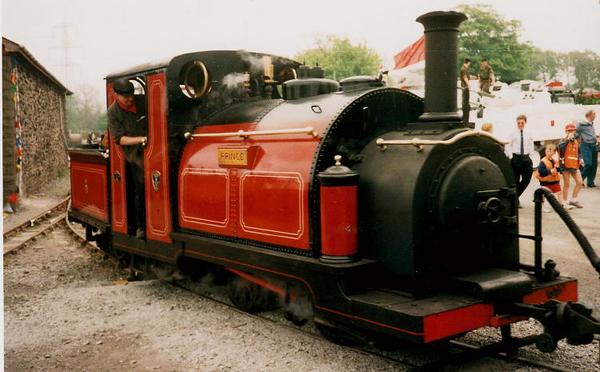George England and Co. on:
[Wikipedia]
[Google]
[Amazon]


 George England and Co. was an early English manufacturer of steam locomotives founded by the engineer George England of Newcastle upon Tyne (1811–1878). The company operated from the Hatcham Iron Works in
George England and Co. was an early English manufacturer of steam locomotives founded by the engineer George England of Newcastle upon Tyne (1811–1878). The company operated from the Hatcham Iron Works in


 George England and Co. was an early English manufacturer of steam locomotives founded by the engineer George England of Newcastle upon Tyne (1811–1878). The company operated from the Hatcham Iron Works in
George England and Co. was an early English manufacturer of steam locomotives founded by the engineer George England of Newcastle upon Tyne (1811–1878). The company operated from the Hatcham Iron Works in New Cross
New Cross is an area in south east London, England, south-east of Charing Cross in the London Borough of Lewisham and the SE14 postcode district. New Cross is near St Johns, Telegraph Hill, Nunhead, Peckham, Brockley, Deptford and Greenwic ...
, Surrey, and began building locomotives in 1848.
The company supplied one of the earliest tank locomotives
A tank locomotive or tank engine is a steam locomotive that carries its water in one or more on-board water tanks, instead of a more traditional tender. Most tank engines also have bunkers (or fuel tanks) to hold fuel; in a tender-tank locomo ...
to the contractors building the Newhaven, Sussex
Newhaven is a port town in East Sussex in England, lying at the mouth of the River Ouse.
The town developed during the Middle Ages as the nearby port of Seaford began drying up, forcing a new port to be established. A sheltered harbour was b ...
, branch line for the London Brighton and South Coast Railway
The London, Brighton and South Coast Railway (LB&SCR; known also as the Brighton line, the Brighton Railway or the Brighton) was a railway company in the United Kingdom from 1846 to 1922. Its territory formed a rough triangle, with London at its ...
and exhibited a design at The Great Exhibition
The Great Exhibition of the Works of Industry of All Nations, also known as the Great Exhibition or the Crystal Palace Exhibition (in reference to the temporary structure in which it was held), was an international exhibition which took p ...
in 1851. It also supplied locomotives to the Ffestiniog Railway, the Wantage Tramway, the Caledonian Railway
The Caledonian Railway (CR) was a major Scottish railway company. It was formed in the early 19th century with the objective of forming a link between English railways and Glasgow. It progressively extended its network and reached Edinburgh an ...
, the London & Blackwall Railway
Originally called the Commercial Railway, the London and Blackwall Railway (L&BR) in east London, England, ran from Minories to Blackwall via Stepney, with a branch line to the Isle of Dogs, connecting central London to many of London's docks. ...
, the Great Western Railway, the Somerset and Dorset Railway and the Victorian Railways
The Victorian Railways (VR), trading from 1974 as VicRail, was the state-owned operator of most rail transport in the Australian state of Victoria from 1859 to 1983. The first railways in Victoria were private companies, but when these companie ...
amongst others.
Locomotive types
Festiniog Railway 0-4-0
The four locomotives supplied by England, in 1863/64, to the Festiniog Railway, were the first truly successfulnarrow gauge
A narrow-gauge railway (narrow-gauge railroad in the US) is a railway with a track gauge narrower than standard . Most narrow-gauge railways are between and .
Since narrow-gauge railways are usually built with tighter curves, smaller structu ...
engines built. Remarkably three of the four survive, much rebuilt, two still in full working order. The other, ''Princess'', was for many years on display at Spooner's Bar in Porthmadog, although without its tender. It has since been restored cosmetically to a high standard, and has made appearances in London and elsewhere for publicity purposes.
Two more similar engines, to an improved design, were built in 1867, one of which, ''Welsh Pony'', survives, and bought back to steam on the 27th of June 2020. Having undergone a careful and sympathetic restoration by the Ffestiniog Railway.
Fairlie
In 1869, England built the famous Little Wonder, Fairlies Patent articulated locomotive, also for the Ffestiniog Railway. George England's daughter, Eliza Anne, had earlier eloped with Robert Francis Fairlie, the inventor of the Fairlie locomotive. On George England's early retirement in 1869, Fairlie took over the company, in partnership with England's son George England junior, renaming it the Fairlie Engine and Steam Carriage Company, but following the death of George England Jr., in July 1870, the works were sold.Victorian Railways 'Old' V class
Victorian Railways 'Old' V class
Victorian Railways 'Old' V class were the first government goods steam locomotives on Victorian Railways, built by George England
George England ( 1811–1878) was an English businessman and engineer. He founded George England and Co., a ...
Preservation
* Wantage Tramway, ''Shannon'', 0-4-0WT, preserved atDidcot Railway Centre
Didcot Railway Centre is a railway museum and preservation engineering site in Didcot, Oxfordshire, England. The site was formerly a Great Western Railway engine shed and locomotive stabling point.
Background
The founders and commercial backers ...
* Ffestiniog Railway, see: Ffestiniog Railway rolling stock
Notes and references
{{Ffestiniog RailwayEngland
England is a country that is part of the United Kingdom. It shares land borders with Wales to its west and Scotland to its north. The Irish Sea lies northwest and the Celtic Sea to the southwest. It is separated from continental Europe b ...
Ffestiniog Railway